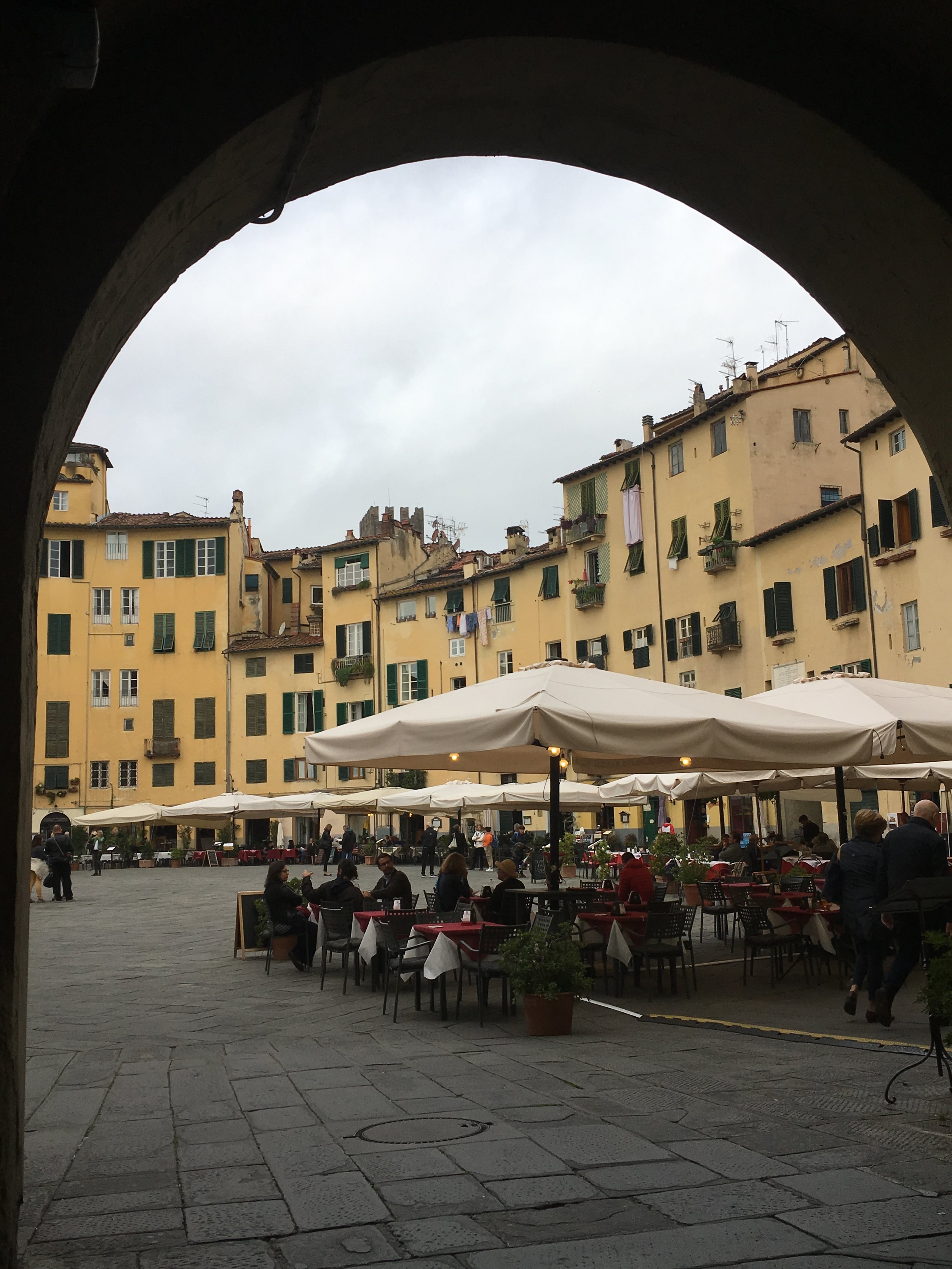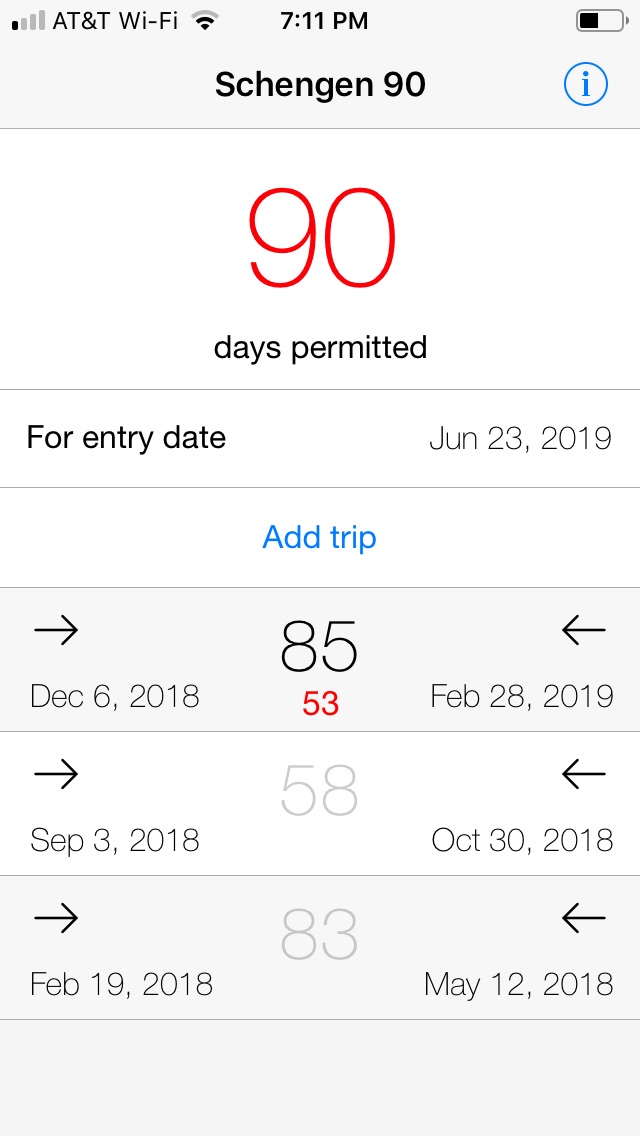When 90 days Is Not Enough: Elective Residency in Italy. Part One: The Schengen Zone and Why it Matters
Italy, at least in my experience, is highly addictive. My Italy habit began with a two-week trip 23 years ago and for me it was love (need, desire, longing – call it what you will) at first sight. Back then, with a family at home and a full-time job, I could only manage a visit every few years. Over time, my longing for Italy grew until finally, on the cusp of my 60th birthday, I arrived for a “once in a lifetime” month-long visit. As with most addictions, that visit only fed my desire, and it quickly became clear that once was not enough.
Piazza Anfiteatro, Lucca
After that trip I found a way to return to Italy for annual visits, which soon became twice annual visits. Once I retired, those twice-a- year visits began to lengthen, bumping into the maximum 90-day stay permitted for non-EU residents. This is how it goes with an Italy obsession until eventually you realize that even 90 days is not enough.
For non-EU citizens who wish to visit for longer than the maximum of 90 days, the process of gaining the needed permissions can be intimidating, to say the least. There are many sources of information – and all of them seem to say something different - leading to confusion and frustration.
A bridge over the Magra River in Bagnone, Tuscany
I recently completed the process of obtaining a visa and a permesso di soggiorno, permitting me to remain in Italy long term. I’ve had lots of requests for information about this process, so it seems timely to write about it. I’ll share information I’ve gleaned from a number of sources, all colored by my own experience as an American seeking permission for a “license to live” in Italy. Since this is a huge topic, I’ll break the information into several posts, Part One: The Schengen Zone and Why it Matters and Part Two: The Visa and Part Three: The Permesso di Soggiorno.
First, some basics about the Schengen Zone.
The Schengen Zone is the “borderless” area of Europe that allows freedom of movement between countries. Members include most nations in the European Union, including Italy (but excluding Great Britain and Ireland) and some non-EU countries (Norway and Switzerland for example). Citizens of Schengen Zone countries do not need special documentation to cross borders and have the ability to remain in any of the member countries for extended periods without further permissions
Barcelona - Spain is another EU country with membership in the Schengen Zone.
Many non-EU citizens (Americans and Canadians included) can enter the Schengen Zone, and travel between countries, with just a passport, no visa required. However, visits are limited to a maximum of 90 days in any 181-day period (roughly equivalent to three months out of any six months - but it’s important to count the days exactly). The rules allow for either a single visit of 90 consecutive days or for multiple visits in and out of the zone as long as a total of 90 days out of any 181-day period is not exceeded. This total is the same whether visiting a single Schengen Zone country or multiple countries.
The 181 days is a “rolling” period, meaning the days are counted backward from today (or from the day you plan to leave the zone). Confusing? Yes. It helps to review the Schengen Zone regulations (available online - see link below) and yes, there is an app for that (which tracks previous visits and calculates the length of permitted stays in the zone for a current or future visit; the one I’ve used is called Schengen 90).
A cafe in Arezzo - so charming, who wouldn’t want to stay here long term?
Here is an example based on my 2018 / 2019 travel (it may help to look at this with a calendar at hand):
I entered the Schengen Zone on February 19, 2018, and remained in Italy for 83 days, leaving on May 12, 2018. This less-than-90-day visit required just my U.S. passport.
I was then out of Italy and the Schengen Zone for more than 90 days, so when I re-entered on September 3, 2018, I was entitled to stay another 90 days. My actual stay for that trip was 58 days - from September 3 through October 30. Still traveling with just my U.S. passport. So far, so good.
Here is where is gets complicated - I returned to Italy on December 6, 2018, (just 37 days after my exit on October 30). Suppose that I wanted to remain in Italy through the end of February 2019 (a total of 85 days from December 3, 2018 - February 28, 2019). This stay would not be allowed under Schengen rules even though the trip would have been for fewer than 90 days. To see why this stay would be a problem, count backward 181 days from my desired February 28, 2019, departure, which takes you back to August 31, 2018. Between August 31, 2018, and February 28, 2019, I would have spent a total of 143 days in the Schengen Zone (all of that in Italy) - far more than the 90-day limit even though no individual stay was greater than 90 days. The math works like this: 58 days in September/October 2018, plus 85 days from December 2018 through February 2019 - 143 days total in this 181-day period. So - I would have needed to leave Italy much sooner than the end of February on such a trip. Plugging these dates into the Schengen 90 app (pictured below), you will see my three 2018 / 2019 trips. The red “53” signifies that I would have overstayed my limit by 53 days. Not a good mistake to make! It also shows that if my next trip were to begin on June 23, 2019, (after an absence of four months) I would once again be eligible for a 90-day stay if traveling with just my U.S. passport.
,
So, what’s a person to do if they want to remain in Italy longer? For stays beyond 90 days (or more than 90 out of any 181-day period) a visa is required. The most important thing to know is that the visa MUST be obtained in one’s home country before arrival in Italy. It simply isn’t possible to obtain the visa after arriving in Italy. Trust me on this - I know several people who have arrived in Italy, having rented or purchased an apartment, and who had to return home after 90 days because they didn’t obtain a visa before coming to Italy - an expensive and discouraging mistake.! And don’t listen to anyone who says that you just have to leave the Schengen Zone for a day to restart the 90-day clock - that simply is not true. It’s critical to know the Schengen Zone rules and Italy’s specific requirements when planning a long-term stay (or a permanent move) to Italy.
If you are planning a longer stay in Italy (or even just daydreaming about one), stay tuned for Part 2 of this post - the process of obtaining a visa and a permesso di soggiorno. -post by Joanne
for more information:
Verona






